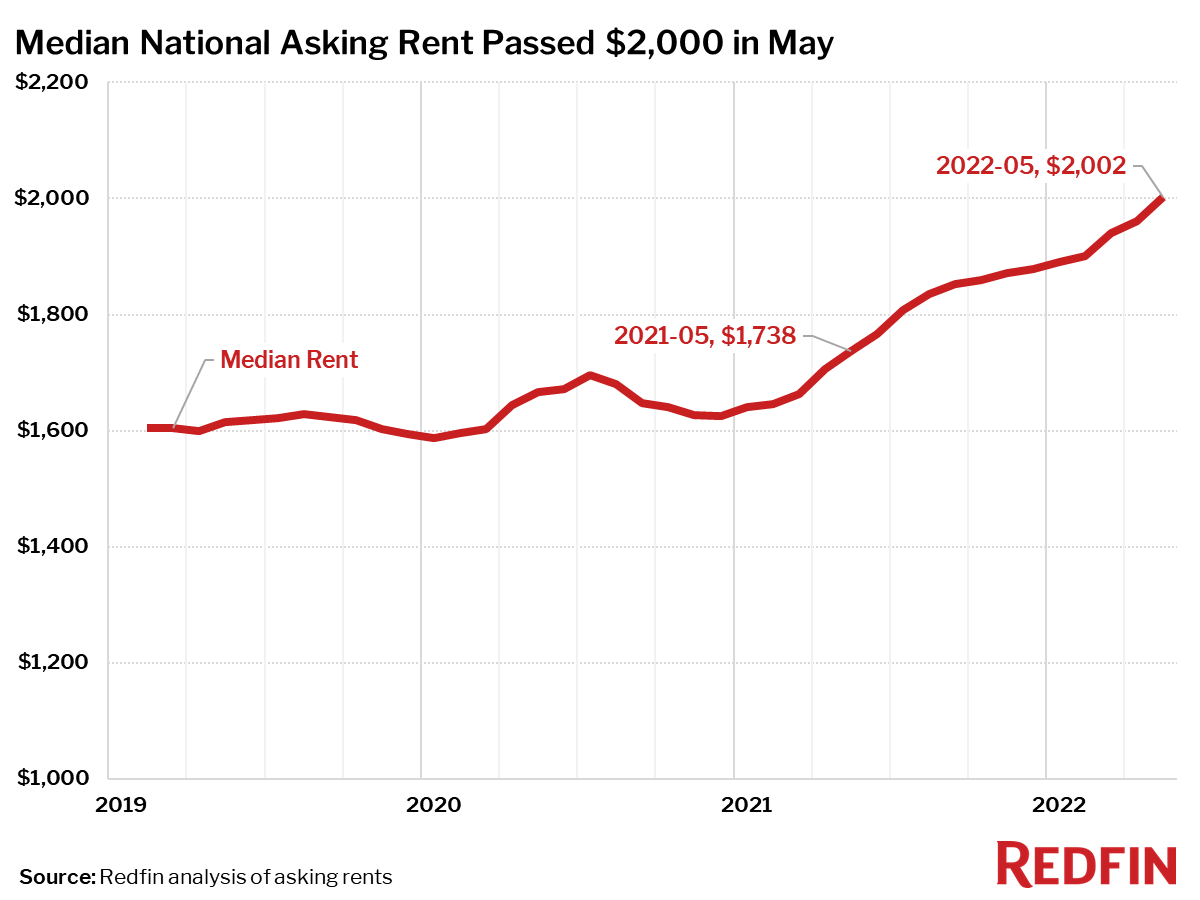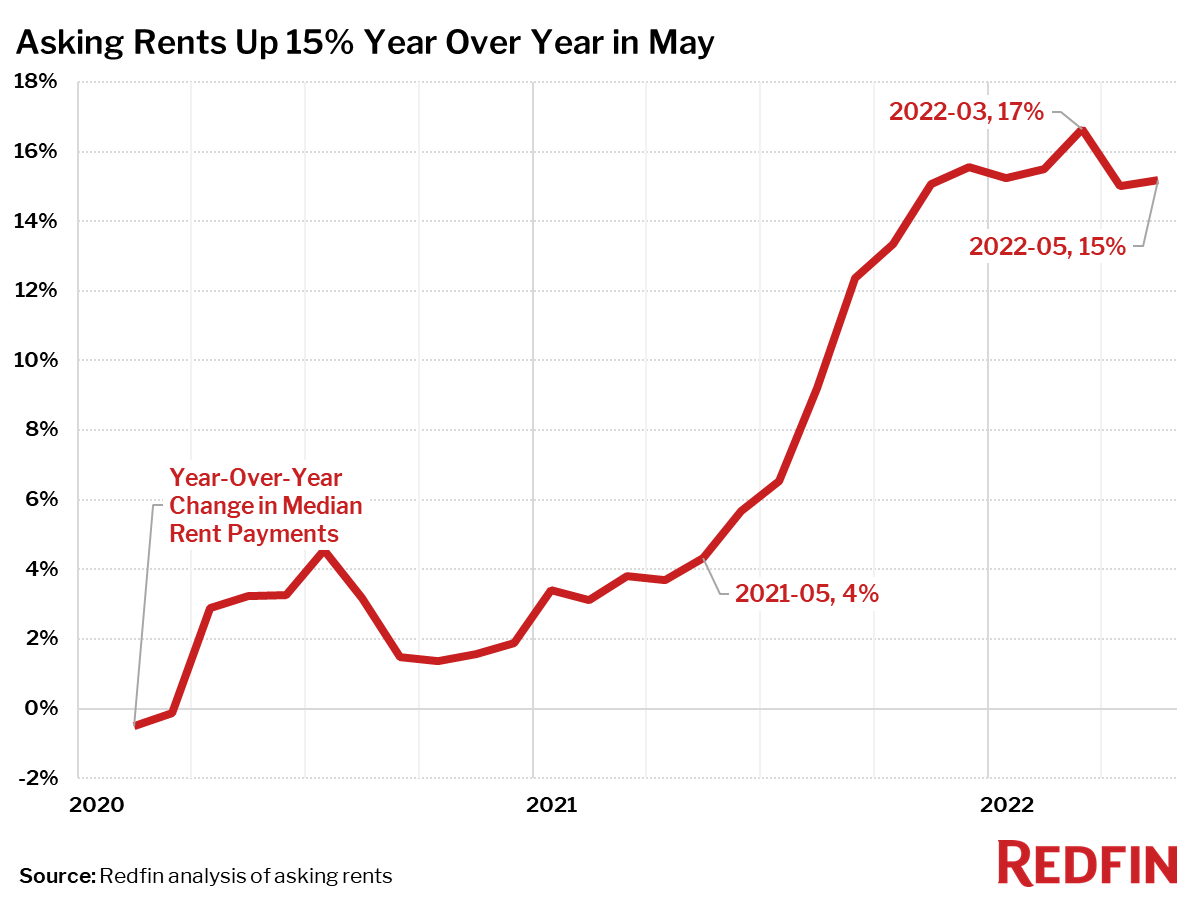The median monthly asking rent in the U.S. surpassed $2,000 for the first time in May, rising 15% year over year to a record high of $2,002. That’s on par with April’s annual increase of 15%, but a slowdown from March’s 17% gain.
“More people are opting to live alone, and rising mortgage-interest rates are forcing would-be homebuyers to keep renting,” said Redfin deputy chief economist Taylor Marr. “These are among the demand-side pressures keeping rents sky-high. While renting has become more expensive, it is now more attractive than buying for many Americans this year as mortgage payments have surpassed rents on many homes. Although we expect rent-price growth to continue to slow in the coming months, it will likely remain high, causing ongoing affordability issues for renters.”


Asking rents surged 48% year over year in Austin, TX—the largest increase on record in any metro area since at least the beginning of Redfin’s rental data in 2019. Nashville, TN, Seattle, and Cincinnati also saw asking rents increase over 30% from a year earlier. Rent growth in Portland, OR (24%) fell below 30% for the first time since the start of the year, causing it to drop out of the top 10.
Just three of the 50 most populous metro areas saw rents fall in May from a year earlier. Rents declined 10% in Milwaukee and 3% in Kansas City, MO and Minneapolis. The same three metro areas saw rents decline in April as well.
Redfin analyzed rent prices from RentPath across the 50 largest metro areas in the U.S. This analysis uses data from more than 20,000 apartment buildings across the country.
It is important to note that the prices in this report reflect the current costs of new leases and new mortgages during each time period. In other words, the amount shown as the median rent is not the median of what all renters are paying, but the median cost of apartments that were available for new renters during the report month. Currently, Redfin’s data from RentPath includes only median rent at the metro level. Future reports will compare median rent prices at a more granular geographic level.


